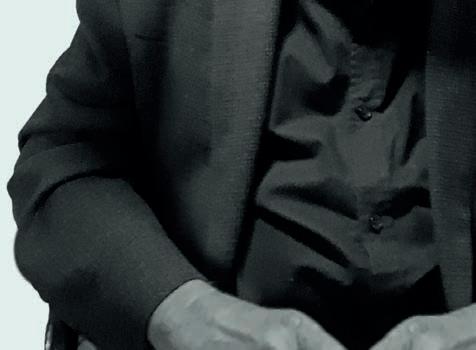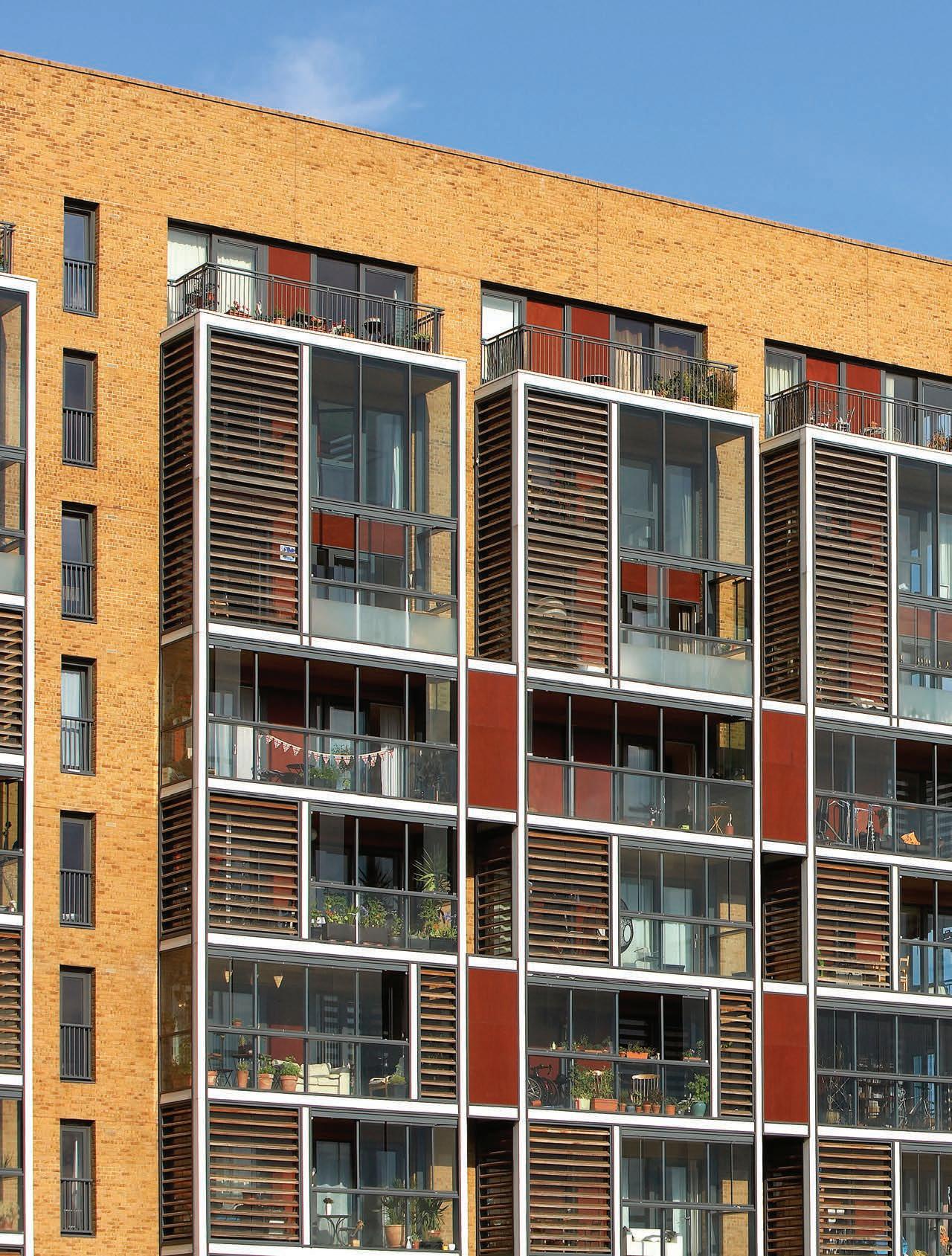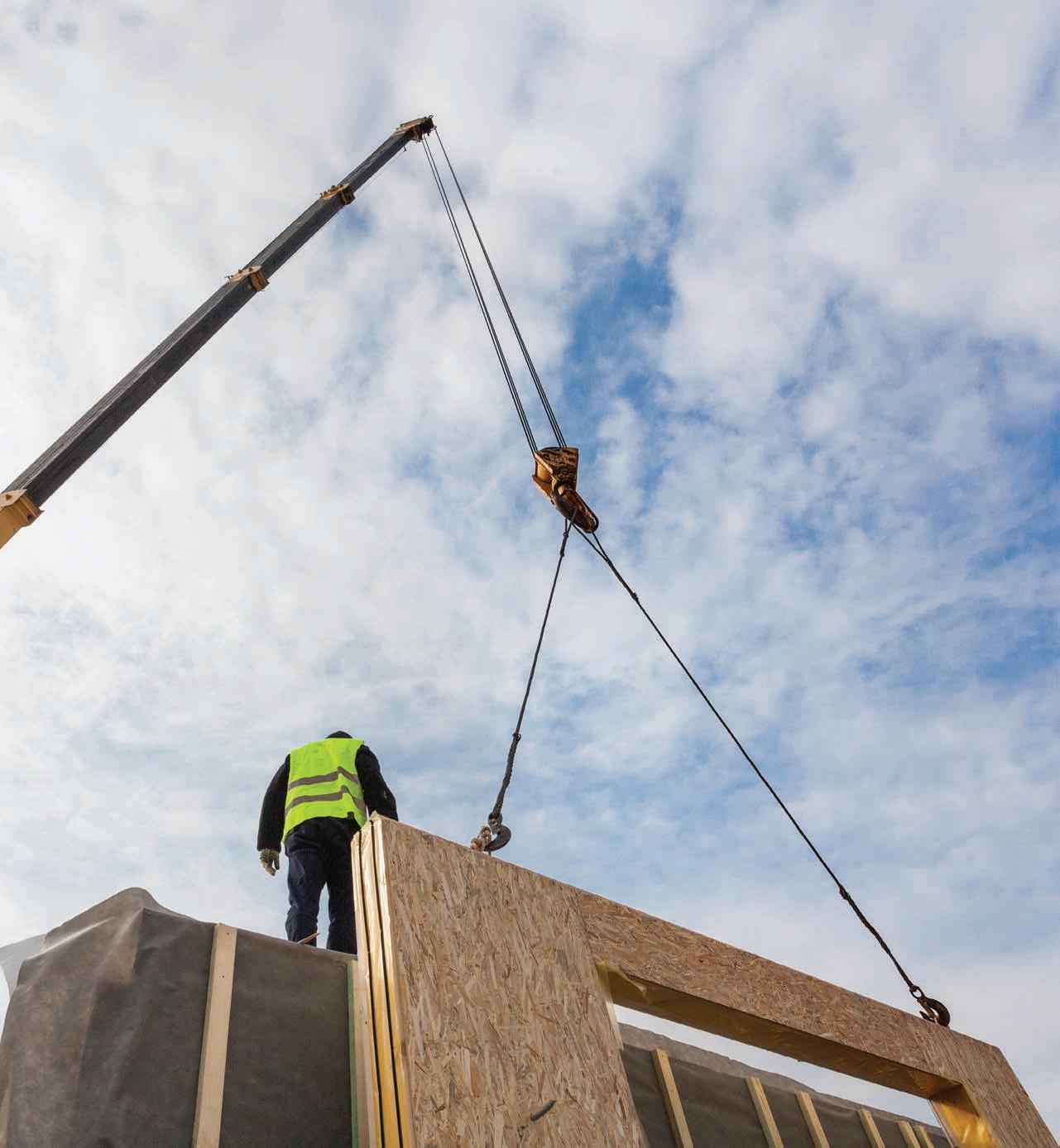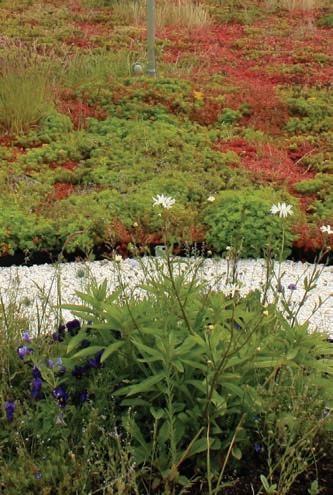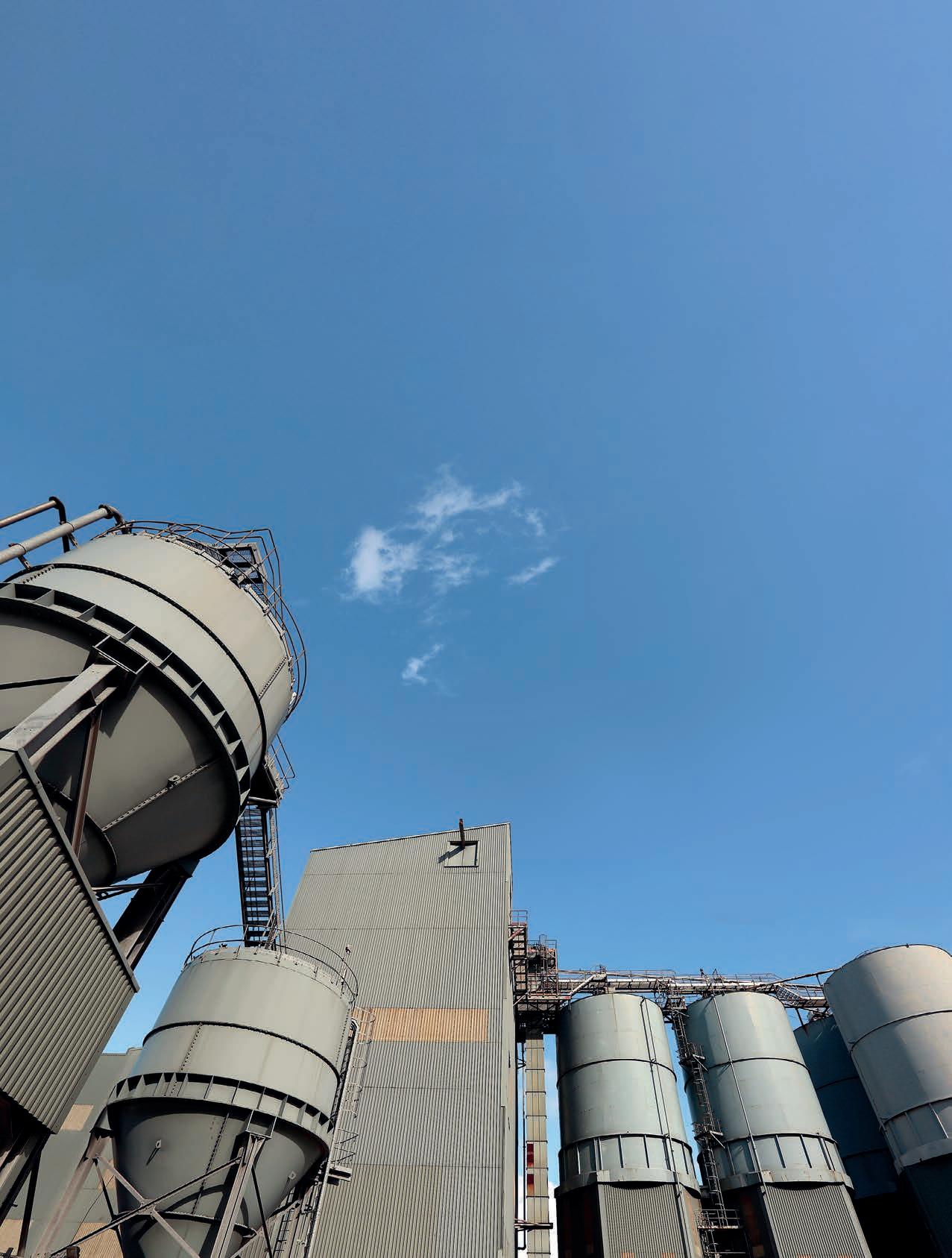
12 minute read
The briefi ng
The briefing
NEWS AND VIEWS FROM THE INDUSTRY
Green recovery?
As the world reels from Covid-19, there have been plenty of positive stories about the eff ects on nature. From goats roaming through Llandudno, north Wales (bit.ly/NWgoats) to improved urban air quality, environmentalists have been quick to point out that the break in human activity has shown the possibilities of slowing climate change.
Rising global carbon emissions could now fall by 6% over the next few months, according to the United Nations’ World Meteorological Organisation (WMO). However, as its Secretary-General Pett eri Taalas warned: “Covid-19 may result in a temporary reduction in greenhouse gas emissions, but it is not a substitute for sustained climate action.”
Ailean Beaton’s article in Holyrood discusses how diff erent governments are facing the new challenge of restarting the economy in a way that supports the climate change commitments they made before the pandemic. The UK Committ ee on Climate Change has already said that its annual progress report to parliament this month will refocus to include discussion of how economic rebuilding eff orts can be designed to support environmentally sustainable industries and activities.
Beaton notes, too, that where people have embraced new ways of working and living they may not want to just return to how things were done before. “There is a real opportunity for governments to make sure that the economic stimulus packages, everything that comes in place to reignite the economy, is diff erent and bett er to what was in place before,” says Charlott e Hartley of the 2050 Climate Group.
A sentiment that is echoed by Dr Richard Dixon, Director of Friends of the Earth Scotland, who notes that for construction the standard response is to: just keep building so the sector can right itself, but that in this case, the sector needs to change what it is building. Experts are unanimously saying that now is the time to invest in low-carbon construction techniques, energy-effi cient housing, green/blue systems and biodiverse urban environments; and that this will not only constitute a green recovery for the economy but it will also save the construction industry.
GLOBAL CARBON EMISSIONS COULD NOW FALL BY 6% DUE TO COVID-19 LOCKDOWN MEASURES
Pollen count
Scott ish Natural Heritage (SNH) has published new guidance for the planning and construction industry to create a more resilient and nature-rich urban environment. Pollinators including bees, wasps, moths, butt erfl ies and fl ies are vital for our biodiversity, but face challenges due to changes in land use, habitat loss, diseases, pesticides and climate change. The guide off ers advice on how best to fi t pollinators into urban design and construction with a series of easy-to-follow steps to suit project budgets and sizes.
Wildfl ower meadows, fl owering trees, hedgerows, nectar-rich plants and herbs, window boxes, green roofs, living walls and sustainable drainage systems can all help expand the habitats of pollinators. They also support biodiversity, improve wellbeing for inhabitants and reduce costs from urban maintenance such as mowing road verges.
Free chartered environmental webinars

The Society for the Environment (SocEnv) is committ ed to facilitating learning and shared good practice across the environmental profession. Its free webinars are just one of the ways to achieve this. They allow registered environmental professional speakers to showcase their expertise and for viewers to engage with a topical issue and ask questions.
In celebration of this year’s World Environment Day theme of biodiversity, throughout the week commencing 1 June SocEnv is running a special series of webinars exploring key aspects of biodiversity including what everyone – from organisations to individuals – can do to boost biodiversity in their area. Culminating in World Environment Day on 5 June, the webinars will feature expert insight and analysis from chartered environmentalists across a variety of sectors and organisations.
Find out more and book your place on one or more of these biodiversity webinars via SocEnv’s dedicated hub: socenv.org.uk/webinars. If you are reading this aft er the 5 June, you can catch up with all the webinars in the series via the same hub. Here you will also fi nd all SocEnv’s past webinars – including the recently completed Climate Change series.
If you are a Chartered Environmentalist via CABE and are interested in presenting as part of a future webinar series, contact Phil at phil.underwood@socenv.org.uk.
Chartered Association of Building Engineers (CABE) is a professional body licensed by the Society for the Environment to award Chartered Environmentalist (CEnv) status. To fi nd out more about becoming a CEnv via CABE, please visit cbuilde.com/register_with_socenv
28 pledge to tackle climate change
CABE and 27 other members of the Construction Industry Council (CIC), together with the UK Green Building Council, the Edge and the University College of Estate Management, have jointly pledged to work together to tackle climate change. They have issued a joint statement that recognises that the breakdown in global climate and biodiversity as a serious issue and that the built environment is a major contributor.
The 28 signatories to the statement acknowledge that the built environment accounts for almost 40% of energy-related carbon dioxide emissions while having a signifi cant impact on natural habitats. To this end, the signatories have established a Climate Change Panel, formed from leaders within each profession and convened by CIC, to aid collaboration and shared endeavour between the professional bodies. The panel will: Drive a net zero carbon emissions pathway Identify and promote examples of best practice carbon reduction, climate resilience, biodiversity protection and improvement Encourage thought leadership and innovation to bring about change Share best practice in terms of education accreditation, membership qualifi cation and CPD development Provide advice on all matt ers relating to the mitigation of the climate change and biodiversity ‘emergencies’ and the appropriate adaptation of the built and natural environment.
On behalf of members and with the advice of the Climate Change Panel, CIC will: 1. Support and provide co-ordination and information exchange for the climate change and biodiversity action plans and activities of individual CIC member organisations.
2. Work with the professional bodies to develop partnerships with governments, the Committ ee on Climate Change, the Construction Leadership Council and other governmental and nongovernmental organisations in pursuit of these objectives.
3. Communicate activities both internally and externally, including through the publication of a regular Climate Change and Biodiversity Digest.
Stephen Hodder MBE, Chair of the CIC said: “Those in the built environment have an enormous role to play in reducing carbon dioxide emissions from new and existing buildings and infrastructure. We hope in forming this unprecedented alliance our collective skills, knowledge and infl uence will drive necessary change.”
Download the statement at bit.ly/CCandBEstatement
Low-energy retrofi t guide
EnerPHit is the gold standard of performance for existing buildings. James Traynor’s practical guide provides architects and designers the tools to retrofi t our existing buildings. To meet the target of reaching carbon zero by 2050, or much earlier, building owners across the UK will be required to upgrade buildings to adhere to increasingly stringent energy performance requirements. Nearly 20% of UK carbon emissions are att ributed to the heating and cooling of buildings. By tackling ineffi cient stock, both carbon emissions and fuel poverty can be addressed, while providing improved thermal comfort and a healthier environment. The guide off ers clear methodology and case studies to improve current buildings for future use.
#yearofnetzero M ulti-disciplinary engineering consultancy Cundall has named 2020 the Year of Net Zero. It will work alongside the Royal Institution of Chartered Surveyors (RICS), Royal Institute of British Architects (RIBA), the Chartered Institution of Building Services Engineers (CIBSE), the UK Green Building Council, the Greater London Authority (GLA) and the London Energy Transformation Initiative (LETI) to help unify the industry and defi ne targets for achieving net-zero carbon in both new and existing buildings. They will then lobby to set these targets in legislation, originally planned to showcase at COP26 in Glasgow in November 2020, now postponed until summer 2021.
Simon Wyatt , Sustainability Partner at Cundall, said: “We saw more industry action around sustainability in the second half of 2019 than in the whole preceding decade… Ultimately, achieving net zero is an engineering problem that needs a technical solution, and we are dedicated to helping the industry achieve it.”
Cundall is working with the GLA to launch new standards for wholelife carbon for all referable schemes, simultaneously sett ing out a proposed roadmap and targets for all developments in the next decade. The next step will be to set intensive targets for whole-life and embodied carbon and mandate compulsory reporting for all building projects.
See Cundall’s #yearofnetzero campaign, UN’s #2030isnow and #decadeofaction campaigns
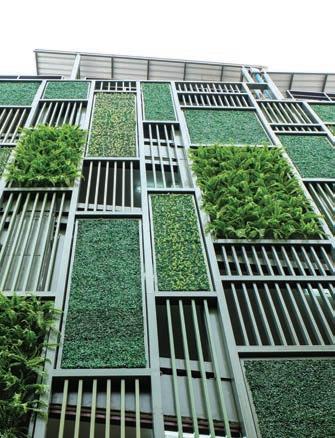
NICE air quality T he National Institute for Health and Care Excellence’s (NICE) guidance Indoor air quality at home noted that as we spend 90% of our lives inside, poor air quality within buildings aff ects our health. The document issues recommendations to stakeholders including local authorities, healthcare professionals and ventilation specialists.
Alan Macklin, Group Technical Director at Elta Group, comments: “There has been signifi cant research into the impact of bad air quality in our buildings, especially as the insulation of structures reduces levels of natural ventilation. Sick building syndrome (SBS) has made an unwelcome return, and the link between CO2 and concentration levels in schools is alarming.” Domestic air quality is no bett er, and given that 60% of time is spent at home (according to the guide) it’s an important focus. “From product design through to installation, the focus must be on adopting a whole-house approach to heating and ventilation, taking energy effi ciency into account while striving for optimum air quality,” he says.
For an understanding of the sources and symptoms of poor indoor air quality and what actions to take to improve it, read the guide at nice.org.uk/guidance/ng149

Dumb cities
Amy Flemming makes a case in The Guardian for cities to embrace an anthropological approach to planning that works with nature, instead of embracing smart systems. She sites Julia Watson’s book Lo-Tek: Design by Radical Indigenism as a guide to ancient habitation solutions to modern environments – as sponge cities architect Kongjian Yu comments: “Ancient wisdom tells us how to live with nature in a smart way.” Examples include the Zuni people in New Mexico, who create waffl e gardens to capture, store and manipulate water for desert crop farming and the Khasi hill tribe in Northern India whose living tree-root bridges can withstand monsoon bett er than any human-made structure. Watson notes that nature-based technologies such as these could be explored for urban use – the living-root bridges could be grown to reduce the urban heat island eff ect by increasing canopy cover for example.
Read the full article at bit.ly/AFlemming
Living Lab Scott ish energy fi rm Biskit Controls has become the latest business to demonstrate an innovation in the Energy System Catapult’s 100-home Living Lab. Biskit has developed a patented technology called the Hydro Genie, which is designed to improve the performance of central heating systems by removing oxygen bubbles from the circulating water to improve heat transfer from the boiler to the water and from the water to radiators. Fitt ed alongside an existing boiler or heat pump, it is designed to reduce the amount of gas needed, lower energy bills and carbon emissions, while keeping the home warmer.
Jim Bisset, founder of Biskit Controls, said: “Hydro Genie applies fl uid dynamics and Henry’s Law to wet heating systems. Assuming constant temperature, Henry’s Law predicts that dissolved gasses are released from liquids


when pressure is reduced. The absence of dissolved oxygen improves the effi ciency of heat transfer and retention. By removing the dissolved oxygen from the central heating’s circulation and electronically controlling the now enhanced heat, savings and reductions in CO2 emissions can be made. The Living Lab trials will provide real-world validation to reinforce the results of the testing we did with the Scott ish Environmental Technology Network in conjunction with Strathclyde University. The tests showed energy and carbon savings of up to 49.8% for domestic homes and up to 39% for commercial buildings.”
The Living Lab is a unique trial facility of 100 connected homes, where innovative businesses can rapidly design, market-test and launch new energy products and services. See page 34 for details.


Blueprint for construction products A t the NBS Construction Product Leaders’ Summit, Dame Judith Hackitt noted that the construction supply chain must change to take maximum advantage of digital technology and made it clear construction materials manufacturers must improve their standards, processes and digital toolkit.
With this in mind, NBS Source provides a digital platform embedding standardised construction product information, using data from thousands of manufacturers, in the places specifi ers need, across the project timeline. It is set to help the construction industry make bett er-informed product decisions and give manufacturers a highly targeted route to market for their products, helping them grow as well as comply.
To help build the golden thread of information for construction materials, visit manufacturers.thenbs.com/ nbs-source
ADAPT AND REUSE The greenest building is the one that is already built, is the key message from the government’s Building Bett er, Building Beautiful Commission report (Jan 2020). The report states: “It is desirable to make bett er use of existing buildings in city centres given not only the colossal challenges facing traditional urban-based business but critically the need to bett er use fi nite natural resources. We want to dispel the perception that renovation represents poor value for money in comparison with demolition and reconstruction.” The report calls for a major shift in policy towards the reuse, refurbishment and retrofi t of existing building stock to manage the longterm impact of the built environment.
Read at bit.ly/Livingwithbeauty
EMBODIED CARBON TOOL Engineering fi rm Thornton Tomasett i has released an embodied carbon measurement tool, BEACON, to aid engineers in understanding and modifying carbon optimisation from the beginning of a project. The open source tool (bit.ly/BEACONgitbook), provides users with a visualisation of a project’s embodied carbon quantities, enabling engineers to design structures that are more sustainable and effi cient.
SEA CHANGE The Roca London Gallery had, since February, been hosting Sea Change: Flood Resilient Architecture for the 21st Century exhibition. The collection of projects showed how urban planners and residents have been adapting to frequent fl ooding in cities. While the gallery is currently closed due to Covid-19, the striking images are well worth viewing online at: bit.ly/RLGSeaChange or visit Roca Gallery at bit.ly/Rocavirtual
Have an opinion on something in this issue or something you’d like to discuss with your peers? e-mail the Editor at cabe@redactive.co.uk

